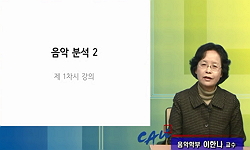The Sarim faction in the 16th century lived up to its belief that a reign of peace can be fulfilled by the control of individual daily lives, whereof doings cannot be explained with a simple concept named ``reformation`` but had been grounded on an id...
http://chineseinput.net/에서 pinyin(병음)방식으로 중국어를 변환할 수 있습니다.
변환된 중국어를 복사하여 사용하시면 됩니다.
- 中文 을 입력하시려면 zhongwen을 입력하시고 space를누르시면됩니다.
- 北京 을 입력하시려면 beijing을 입력하시고 space를 누르시면 됩니다.

문학과 정치 혹은 문학의 정치 ; 16세기 오륜시조 출현의 시기적 조건과 그 정치적 의미 = Literature and Politics-The Politics of Literature : The Seasonal Conditions of Oryun-Sijo`s Emergence in 16th Century and It`s Political Implications
한글로보기https://www.riss.kr/link?id=A82677040
- 저자
- 발행기관
- 학술지명
- 권호사항
-
발행연도
2011
-
작성언어
-
-
주제어
16세기 ; 오륜 ; 오륜시조 ; 사림파 문인 지식인 ; 이학 ; 도학 ; 심학 ; 성리학 ; 기질변화론 ; 일상성의 정치 ; 장르 ; 경기체가 ; 시조 ; 음악 ; 소학적 질서 ; 16th Century ; Oryun ; Oryun-Sijo ; Sarim School Scholars ; The Learning of Li(理) ; The Learning of Way(道) ; The Learning of Way(心) ; Theory of Transforming the Temperament ; T
-
KDC
800
-
등재정보
KCI등재
-
자료형태
학술저널
- 발행기관 URL
-
수록면
21-54(34쪽)
- 제공처
-
0
상세조회 -
0
다운로드
부가정보
다국어 초록 (Multilingual Abstract)
The Sarim faction in the 16th century lived up to its belief that a reign of peace can be fulfilled by the control of individual daily lives, whereof doings cannot be explained with a simple concept named ``reformation`` but had been grounded on an ideological mutation since the 16th century. The author has made an attempt to identify the motives of Oryun-Sijo from the historical context. The tentative conclusions are as in the following: First, Neo-Confucian Philosophy, pursued by Confucian scholars who were belonging to the Sarim faction in the 16th century, was remarkably different from Neo-Confucianism conditioned as an official study in previous time. Their new ideology was named ``the Learning of Way`` or ``the Learning of Mind`` or ``the Learning of Li.`` The then people rejected it due to its heterogeneity or were skeptical about its feasibility. Considering that all the Oryun-Sijo writers were the Sarim faction and literature is inseparable from writers` thoughts, it can be presumed that the appearance of Oryun-Sijo might be closely connected to Neo-Confucian Philosophy whereto they adhered. Second, the Theory of Transforming the Temperament, a factor of Neo-Confucian Philosophy, i.e., a theory that human nature can be restored by the change of temperament, functioned as the theoretical rationale of reformation means they carried forward aggressively, which implies that human nature can be changed through efforts and training. Such thinking has relation to the political rise of the Sarim faction in the 16th century as well as to the reformation means carried out on a first-ever scale and way. Third, the Sarim faction in the 16th century tried to fulfill the principle of Sohak by controlling intimate and microscopic behavioral patterns such as eating, working, sleeping, etc. rather than macroscopic factors such as laws and systems. The appearance of Oryun-Sijo was based on such an aim. They regarded the music of the time as vulgar and as a hindrance to the change of temperament, and thus needed to move it ahead in a direction they wanted to see. As a result, all the popular songs were modified with their intention for a long time. In the process, Oryun-Sijo was produced. In order to effectively rein the everyday realm for which the order of Sohak stands, it is necessary to repeat the lyrics within the spatiotemporal region of everyday life, which was why Sijo was selected to be the principal genre of Oryun in the 16th century instead of Kyungkichega.
동일학술지(권/호) 다른 논문
-
- 민족문학사학회·민족문학사연구소
- 유성호 ( Sung Ho Yoo )
- 2011
- KCI등재
-
문학과 정치 혹은 문학의 정치 ; 문학의 정치 문사연의 새로운 20년을 위하여
- 민족문학사학회·민족문학사연구소
- 최원식 ( Won Shik Won )
- 2011
- KCI등재
-
문학과 정치 혹은 문학의 정치 ; 『강로전』에 나타난 전쟁의 기억과 욕망의 서사
- 민족문학사학회·민족문학사연구소
- 조현우 ( Hyun Woo Cho )
- 2011
- KCI등재
-
문학과 정치 혹은 문학의 정치 ; 17세기 전반 재지사족의 자기정체성 확립과 기억의 정치학 -황석산성(黃石山城) 전투에 대한 엇갈린 기억의 『용문몽유록(龍門夢遊錄)』을 중심으로
- 민족문학사학회·민족문학사연구소
- 정출헌 ( Chul Heon Chung )
- 2011
- KCI등재




 KISS
KISS






